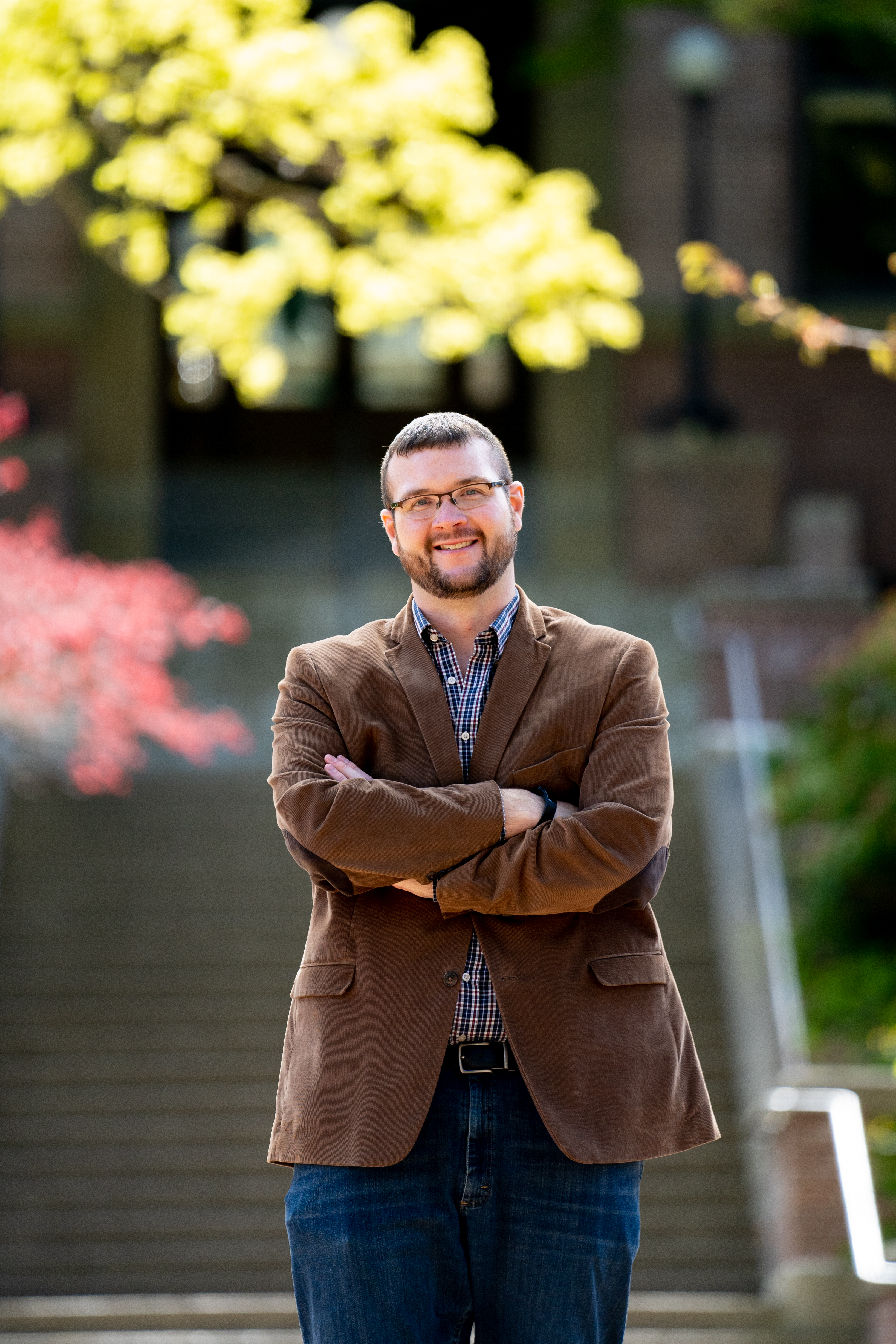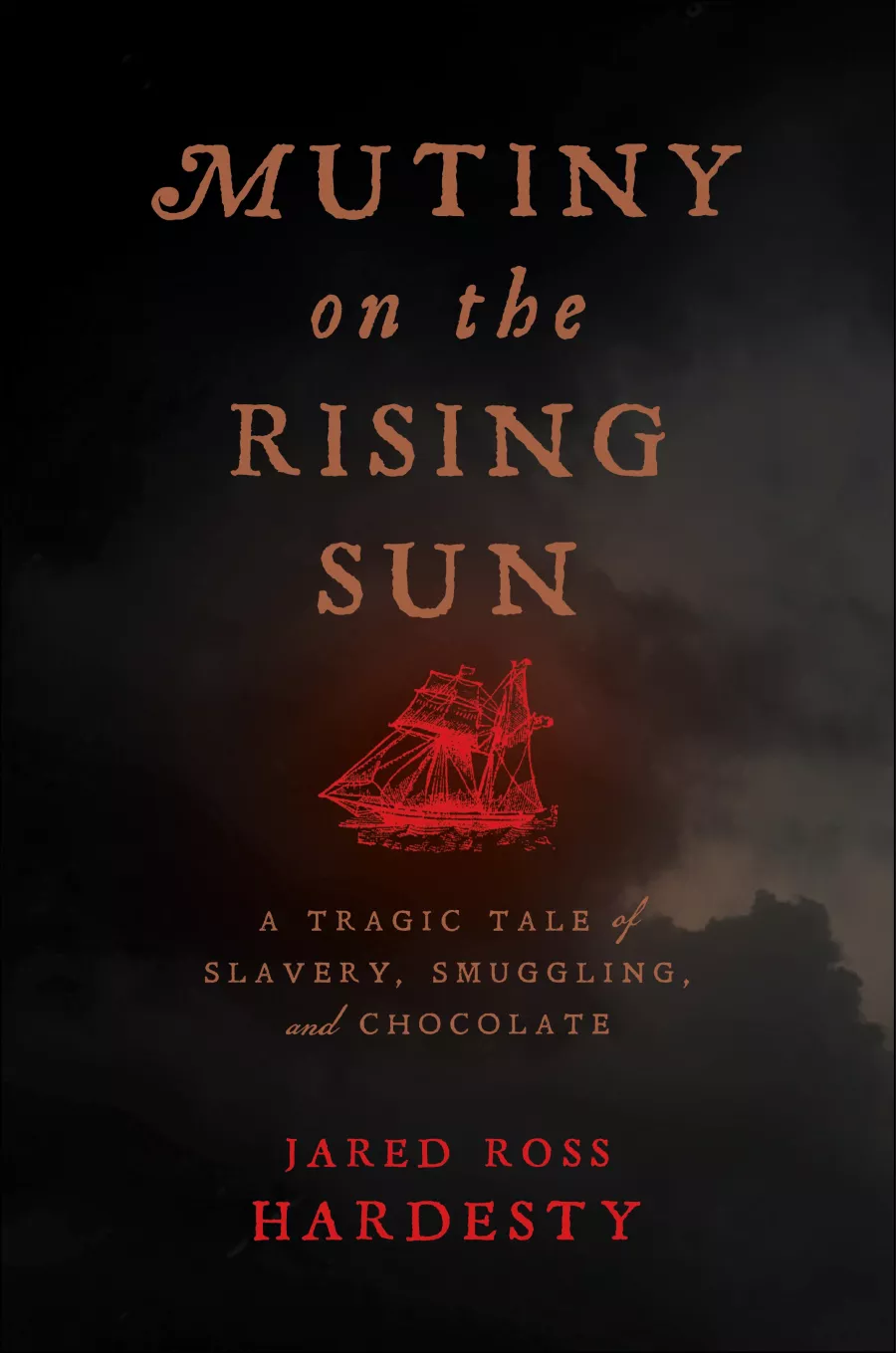The schooner Rising Sun sailed along the coast of Suriname the night of June 1, 1743, a typical smuggling run with 15 enslaved Africans aboard and a fortune in chocolate, sugar and coffee. Just before midnight, three sailors intent on making their own fortune from the illegal cargo sneaked below deck to seize control of the ship, murdering the captain and three others. The mutiny also left behind an astonishing trove of documents illustrating how deeply smuggling and slavery were intertwined with all levels of early American commerce and society.
Associate Professor of History Jared Hardesty tells the story in his newest book, “Mutiny on the Rising Sun: A Tragic Tale of Slavery, Smuggling, and Chocolate,” published by NYU Press in October 2021.
Like his other two books, “Unfreedom: Slavery and Dependence in 18th Century Boston” and “Black Lives, Native Lands, White Worlds: A History of Slavery in New England,” Hardesty works to tell stories about slavery that have often been left untold, illustrating how slavery was not just a “Southern issue.” Slavery made many people rich who never set foot in the South.
How did you first come upon the story of the Rising Sun?
In September 2016, I received an invitation to give a talk about my first book at the Old North Church and Historic Site in Boston. While there, I learned about one of Old North’s 18th-century parishioners named Newark Jackson. Old North had opened a historic chocolate shop and named it after Jackson, who was a merchant, ship captain, and one of the first chocolatiers in Boston. They had done some basic genealogical research on Jackson, but still had questions about who he was and, especially for the shop’s sake, where he acquired the cacao to make chocolate. I started to dig into Jackson’s life a bit and, in the course of that initial research, I discovered two things. First, Jackson was a smuggler, conducting illegal trade throughout the Americas and especially in the Dutch colony of Suriname. Second, he died in a mutiny on board a ship he captained, the Rising Sun, in June 1743. Most exciting for me as a historian, the mutiny generated a large amount of documentation in Dutch, British, and American archives.
What made you decide to take the tale of the mutiny on that one small ship and turn it into a clear-eyed look at the Atlantic slave trade?
After learning about the mutiny and all the records surrounding it, Old North applied for and received a Forrest E. Mars Jr. Chocolate History Grant from Mars Wrigley Confectionery (yes, of M&M’s fame!). I was the principal investigator for the grant, hiring a multinational team of researchers to learn more about Newark Jackson. As we delved into the records, we discovered a far richer documentary record than I first imagined. What emerged was less about Jackson, who moved away from the center of the story, and more about an international cacao smuggling ring that trafficked New England produce (salt fish, timber, etc.) and captive Africans from the British colonies to exchange for cacao grown in Suriname.
Most significantly, the voyage of the Rising Sun was a slave trading voyage. In October 2018, the project’s research assistant in the Netherlands, Ramona Negrón, discovered an inventory of the ship taken after the mutiny and, at the end, it listed 15 enslaved people, 13 of whom were children, on board the vessel. They were, in the cruel language of the Atlantic slave trade, the “remainders” of a much larger cargo of captive Africans that the smuggling ring, using the Rising Sun, trafficked from the British Caribbean plantation colony of Barbados to Suriname.
Upon learning about these captives, it completely changed the nature of the project and the subsequent book. The book that I had envisioned as a swashbuckling tale of smuggling, mutiny, and murder transformed into a much more somber and sober history of smuggling and the illegal inter-American slave trade. Mutiny on the Rising Sun is ultimately what I call a “human history of smuggling” that details the lives of all the people caught in the webs spun by illicit commerce. Important for that “human history” are the lives of the captives onboard the Rising Sun, whose role in this world of smuggling meant being cargo to be bought and sold.
Do you think an increased willingness exists to reexamine slavery in this country, given movement towards more frank discussions in our society around social justice?
Absolutely. One of the most rewarding parts of writing “Mutiny on the Rising Sun” was the opportunity to work with the Old North Church and Historic Site. Every step of the way, they have been willing to embrace their site’s connection to smuggling, slavery, and the slave trade, incorporating that information into their interpretive and educational programming. They also removed human trafficker Newark Jackson’s name from their historic chocolate shop. And Old North is not alone. We’re in a moment of historical reckoning as historic sites, libraries and archives, religious and educational institutions, and governments are not only willing, but often eager to examine their connections to slavery and other unsavory histories. The real question, however, is what to do with that information. Confronting the past is ultimately good, but, in most instances, the place of that confrontation in our current moment and its connection to contemporary social justice movements remains to be seen. Reckoning for reckoning’s sake is not enough. How institutions put that reckoning into action is what matters most.

